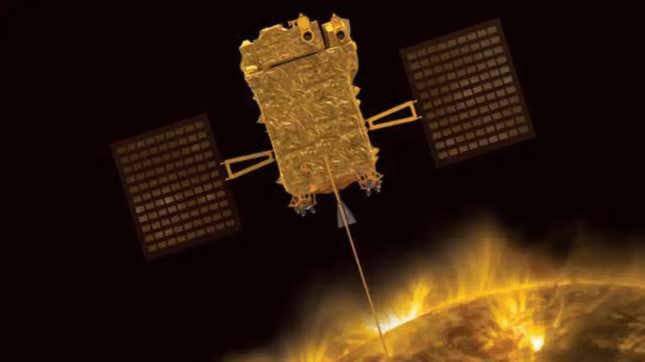
In a little over two weeks since its launch, India’s Aditya-L1 mission started collecting data to help analyze the behavior of particles that surround Earth.
The spacecraft’s Supra Thermal & Energetic Particle Spectrometer (STEPS) instrument was switched on on September 10 while the spacecraft was around 31,068 miles (50,000 kilometers) away from Earth, the Indian Space Research Organization (ISRO) announced on Monday.
Advertisement
STEPS has six sensors, each observing in different directions to measure super thermal and energetic ions and electrons using low and high-energy particle spectrometers, according to ISRO.
The Aditya-L1 mission launched on September 2 and is headed towards the Earth-Sun Lagrange Point 1, a gravitationally stable spot located about 1 million miles (1.5 million km) away. The spacecraft’s initial measurements using STEPS will continue until Aditya-L1 reaches its distant orbital perch, from which the spacecraft will keep observing the particles surrounding our planet. The data will help scientists figure out the origin, acceleration, and anisotropy of solar wind and space weather phenomena (i.e. how their intensity and characteristics vary depending on direction), ISRO wrote in its statement.
Advertisement
Advertisement
Aditya-L1 carries seven science instruments on board, four of which will be aimed directly at the Sun while the remaining three will be used to measure particles at the Lagrange Point 1 to study the effects of solar dynamics in the interplanetary medium (or the space between the planets and the Sun).
The mission marks India’s first attempt to study our host star. Aditya (which refers to the Hindu sun god) is designed to observe solar activities to better understand space weather and how it affects Earth.
India launched its first solar mission while still on a high from acing its first touchdown on the lunar surface with the Chandrayaan-3 mission on August 23. The mission is currently in sleep mode to survive the cold lunar night, but ISRO will attempt to wake its lander and rover up when the Sun rises on the cratered surface of the Moon.
For more spaceflight in your life, follow us on Twitter and bookmark Gizmodo’s dedicated Spaceflight page.
Services Marketplace – Listings, Bookings & Reviews